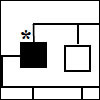
Session Overview
 |
This session will explain why inheritance does not always follow Mendel's rules, or the rules predicted for the chromosome theory of inheritance. Because thousands of different genes are found along a single chromosome, and only one of the pair of chromosomes found in the parent is passed to the offspring, Mendel's law of independent assortment cannot apply to all genes. Because homologous chromosomes can exchange DNA, resulting in recombination, alleles of genes found on the same chromosome in the parent are not necessarily inherited together. Thus the pattern of inheritance depends upon the location of the genes studied with respect to one another. Mating experiments can be used to map the relative distance between linked genes. Learning Objectives
|
Session Activities
Lecture Video
Watch the lecture video
-
Linkage and Recombination, Genetic maps (00:38:54)
Linkage and Recombination, Genetic maps
> Download from iTunes U (MP4 - 85.1)
> Download from Internet Archive (MP4 - 85.1MB)
Check Yourself
Fruit flies can have red eyes or brown eyes. Fruit flies can have long body hairs or short body hairs. You cross a true-breeding female fly (P1) with red eyes and short hairs to a true-breeding male fly (P2) with brown eyes and long hairs. All of the F1 flies have red eyes and long hairs. Assume the E and H loci are linked.
Session Activities
Practice Problems
Further Study
Suggested topics for further study in an introductory-level Biology textbook
- Mendel’s laws of inheritance
- Common genetic terms
- Genetic crosses
- Mendelian inheritance
- Punnett Squares
Useful Links
